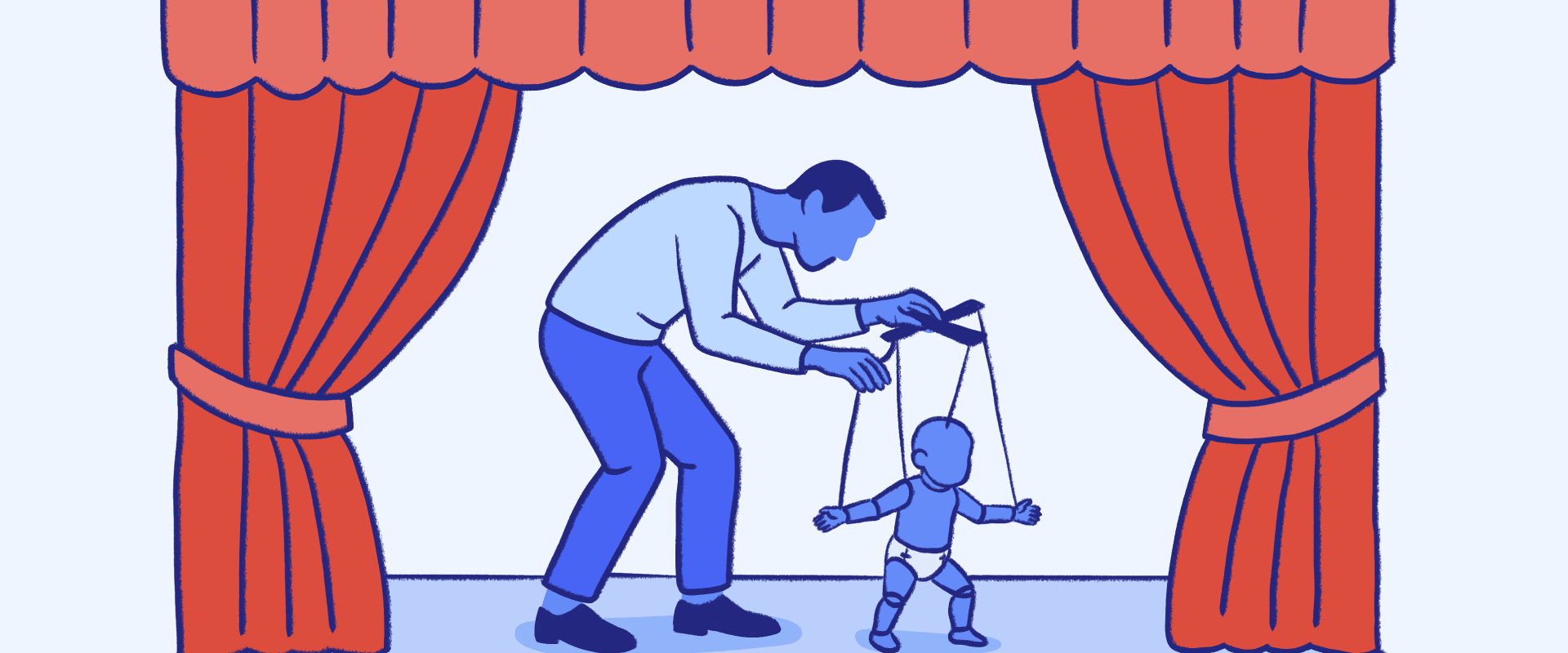Learn / Attending Rehab for Work-Related Burnout
Attending Rehab for Work-Related Burnout


December 16th, 2021| Clinically Reviewed by
Key Points
- Burnout is a result of chronic workplace stress.
- Experts found 6 key areas of life related to burnout, starting with overwork.
- In treatment, expect a balance of traditional therapies and relaxation techniques.
Burnout can affect anyone. Even if you love your work, it’s possible to get overwhelmed. And ignoring your exhaustion may just exacerbate your symptoms. If you feel yourself hitting a wall, it’s important to remember that you’re not alone. This experience is widespread enough that there are many rehab programs designed to treat work-related burnout.
This condition isn’t permanent—or at least, it doesn’t have to be. Although burnout is a collection of mental health symptoms, it is not a long-term diagnosis, like depression or anxiety. Instead, it is the result of external circumstances, combined with unsustainable work habits. It is highly treatable, but it should not be ignored.
Understanding Job Burnout
According to the World Health Organization (WHO), “Burn-out is a syndrome conceptualized as resulting from chronic workplace stress1 that has not been successfully managed.” It is characterized by exhaustion, increased cynicism or mental distance from one’s job, and a sense of ineffectiveness or lack of accomplishment. These symptoms must specifically occur in the context of work, and not describe other areas of the client’s life.
Unfortunately, this condition is on the rise. In one study, 52% of respondents reported experiencing burnout2 in 2021, up from only 43% in 2020. This may be partly due to the stress of current events, although more research is needed. Whatever the root cause, it’s clear that high levels of stress have become pervasive in the culture of the workplace.
Even if you’re not personally going through burnout, the numbers indicate that most people work with those who are. By compensating for your colleagues’ exhaustion, you may be at risk of developing the same condition. This is especially important because of the social aspects of burnout.3 The three primary symptoms of this condition, as described above, place “the individual stress experience within a social context,” which may cause it to negatively impact your relationships.
Experts have identified 6 key domains of a person’s life that are related to burnout. Stress within these areas may represent a risk factor for developing symptoms.
Workload
“Overwork is a main cause of burnout.”4 If you can’t take time off, you may experience both mental and physical symptoms of exhaustion. These can include anxiety, a lack of focus, loss of sleep, and even physical pain. Insufficient rest can also increase levels of cortisol,5 the stress hormone, which may lead to additional health issues.
When you have too much to do, it can become difficult to prioritize and deprioritize various tasks. You might spend hours color-coding a spreadsheet, but be too tired to brush your teeth. This type of inattention can cause additional problems at work, if you simply don’t have the time or energy to complete important projects. Over time, these behavioral patterns can increase your workload even further, causing you to spiral into a state of exhaustion.
Control
Healthcare professionals often assess burnout using the Maslach Burnout Inventory, a tool that asks clients to rate their emotional experience of exhaustion, cynicism, and similar criteria. Christina Maslach, creator of this scale, explains that “control problems occur when workers have insufficient authority6 over their work or are unable to shape the work environment to be consistent with their values. A sense of efficacy is unlikely to occur when workers are feeling buffeted by circumstances or powerful people within the organization.”
At first glance, it may seem that this lack of control mostly affects employees, rather than high-level executives. But this dynamic is more complex than it appears. Workers at every level have a responsibility to various people, whether those people are employers, employees, shareholders, or clientele. No matter your position, certain circumstances may make you feel like your needs are less important than the company’s. If you find that you have irreconcilable differences, it may sound appealing to simply change jobs. If you’re in a position of power, however, it’s not always that simple.

Reward
In the context of work, the idea of reward is often linked to income. If you’re making less than you’re worth, you may be at a greater risk for burnout. But that’s just one aspect of this issue.
It’s also possible for your work to be unrewarding in and of itself. Almost no amount of money can make up for a boss who constantly berates you. And that lack of recognition can go in both directions. Many top executives spend more time-solving problems than they do receiving praise. Even if this pattern is good for the company, it can wreak havoc on your mental health.
Community
Community is an extremely important part of individual mental health.7 According to one expert, groups that “provide individuals with a sense of meaning, purpose, and belonging…have positive psychological consequences.” Without a strong workplace community, you may be at a greater risk for burnout.
When an unsupportive culture is combined with an above-average workload, you may struggle to maintain meaningful relationships. If you don’t have time to socialize outside of work, you’ll depend on your colleagues for emotional connectivity. This pattern is unsustainable at best, and can be extremely harmful. If this is a primary contributor to your experience of burnout, you may want to consider a rehab program that can help you learn to build community.
Fairness
Even as children, human beings have an innate sense of fairness.8 In adults, of course, this matures into a more complex understanding of equality. At any age, we long to be treated well, receiving the compensation and recognition we feel we’ve earned.
Our perceived sense of fairness impacts our productivity,9 and perceived injustice can lead to burnout. Research suggests that when workers feel they are being treated unfairly, they are likely to take more sick time. This is often caused by objectively unfair treatment, such as racism or sexism. However, the perception of unfairness is equally important. If you believe that you’ve been unfairly passed over for a promotion—even if your employer has good reasons for choosing someone else—you may become more cynical about your work.
Values
When a worker’s values and goals don’t align with those of the company, it “may result in lower job satisfaction4 and negatively impact mental health,” writes Jennifer Moss, author of The Burnout Epidemic: The Rise of Chronic Stress and How We Can Fix It. This misalignment can sometimes be avoided through clear communication, especially at the time a person is hired. However, that’s not always possible. Both people and companies change over time. If you’re with a company long enough to go through major life transitions—such as getting married or becoming a parent—your needs may shift significantly.
In order to find a workplace that shares your priorities, you must first be able to articulate what you value. There’s no right or wrong answer to this question, but it’s important to be ruthlessly honest with yourself. For example, imagine you’re a person who highly values creative expression, and you’re working at a company focused on robust scientific research. While both of these are laudable pursuits, you might not be happy sitting at a desk and crunching numbers. No one is at fault. But it’s your responsibility to define your needs and look for ways to meet them.
Signs and Symptoms of Burnout
When your needs aren’t being met, you’re at a high risk of burning out. And if you’re used to prioritizing others’ needs over your own, it can be hard to notice this before it becomes a problem. Unfortunately, it’s quite common for people to ignore their exhaustion until it becomes unmanageable.
According to experts at The Dawn Rehab in Chiang Mai, Thailand, you can recognize burnout by watching for the following symptoms:
- Mental and physical exhaustion
- Pessimism
- Loss of interest in your job
- Interpersonal issues in the office
- Relationship and intimacy issues
- Irrational irritability
- Decreased productivity
Many workers—and especially high achievers—feel the pressure to just power through these symptoms, no matter how debilitating they may be. As tempting as it is, that strategy just isn’t effective. Even if the only goal is to do your job well, remember that you will be more effective at work if you take care of your mental health first. And what’s more, you deserve the same care and attention that you offer your colleagues and your clients.

Explore Burnout Treatment Centers
Attending Rehab for Burnout
Rehab isn’t just for substance use disorders. Many programs are specifically tailored to help clients heal from job burnout. In this type of treatment, you can expect to balance your time between relaxation and more traditional therapies.
Inpatient treatment isn’t a vacation. However, treating burnout is calming and rejuvenating. During this time, you’ll take a break from work, reassess your priorities, and develop more sustainable habits to use in the future. Your program may include a number of different components.
Talk Therapy
Talk therapy helps clients reconnect with themselves. You’ll work with a provider to define your personal values and find ways to honor them in your daily life. You may also work through cynicism or resentment, and develop skills to avoid unhealthy behavioral patterns.
As you get to know yourself again, you may also learn to differentiate between regular stress and the warning signs of burnout. If your work gets out of hand in the future, this knowledge can help you recognize warning signs as early as possible.
Mindfulness
Meditation, yoga, and other mindfulness practices help you stay in the present moment. With these skills, clients are better equipped to regulate their emotions. While stress is sometimes unavoidable, you can gain some amount of control over your own response to it.
Massage Therapy
Massage isn’t just rejuvenating; it can also help strengthen the connection between body and mind. By relieving physical tension, clients may also learn to let go of emotional stress. Different types of massage therapy may be more focused on relaxation or on relieving specific areas of pain. Either way, clients often find that this modality helps them work through both physical and emotional symptoms.
Therapeutic Technologies
Some facilities offer access to cutting-edge technologies known to relieve symptoms of burnout and exhaustion. At All Points North Lodge, for example, you may engage in hyperbaric oxygen therapy (HBOT), which is known to alleviate anxiety, depression, and a host of physical conditions. Your team of experts will help you decide whether this treatment is appropriate, given your unique health needs.
Personalized Recovery From Job Burnout
Burnout may cause you to feel emotionally disconnected, both from those around you and from your own needs. Because of this, treatment is often personalized for each specific client.
By choosing between a variety of therapies, you can reconnect with your own most deeply held needs, goals, and values. At its best, this process is both therapeutic and enjoyable. This is your opportunity to decide what it means for you, specifically, to live a healthy life.
To learn more, browse our list of luxury rehab programs that treat work-related burnout.
Frequently Asked Questions About Rehab for Job Burnout
What are the signs of burnout?
Signs of burnout are often physical, behavioral, and emotional:
• Mental and physical exhaustion
• Decreased productivity
• Irritability
• Loss of interest in your job
• Interpersonal issues at work
• Relationship and intimacy issues
Can you go to rehab for burnout?
Yes, you can go to rehab for burnout. Treatment programs for workplace burnout often combine conventional therapies, like talk therapy, with relaxation techniques.
How do you treat burnout?
The first step is to pause work as you reassess priorities and develop more sustainable habits. Burnout treatment at rehab often includes talk therapy, mindfulness, therapeutic technologies, massage, and more.
-
Burn-out an “occupational phenomenon”: International classification of diseases. (n.d.). Retrieved December 16, 2021, from https://www.who.int/news/item/28-05-2019-burn-out-an-occupational-phenomenon-international-classification-of-diseases
-
Kelly, J. (n.d.). Indeed study shows that worker burnout is at frighteningly high levels: Here is what you need to do now. Forbes. Retrieved December 16, 2021, from https://www.forbes.com/sites/jackkelly/2021/04/05/indeed-study-shows-that-worker-burnout-is-at-frighteningly-high-levels-here-is-what-you-need-to-do-now/
-
Maslach, C., & Leiter, M. P. (2016). Understanding the burnout experience: Recent research and its implications for psychiatry. World Psychiatry, 15(2), 103–111. https://doi.org/10.1002/wps.20311
-
Six causes of burnout at work. (n.d.). Greater Good. Retrieved December 16, 2021, from https://greatergood.berkeley.edu/article/item/six_causes_of_burnout_at_work
-
Dahlgren, A., Kecklund, G., & Akerstedt, T. (2005). Different levels of work-related stress and the effects on sleep, fatigue and cortisol. Scandinavian Journal of Work, Environment & Health, 31(4), 277–285. https://doi.org/10.5271/sjweh.883
-
Rampton, J. (n.d.). The 6 causes of professional burnout and how to avoid them. Forbes. Retrieved December 16, 2021, from https://www.forbes.com/sites/johnrampton/2015/05/13/the-6-causes-of-professional-burnout-and-how-to-avoid-them/
-
Haslam, S. A., Jetten, J., Postmes, T., & Haslam, C. (2009). Social Identity, Health and Well-Being: An Emerging Agenda for Applied Psychology. Applied Psychology, 58(1), 1–23. https://iaap-journals.onlinelibrary.wiley.com/doi/10.1111/j.1464-0597.2008.00379.x
-
Warneken, K. M., Peter R. Blake,Felix. (n.d.). Do kids have a fundamental sense of fairness? Scientific American Blog Network. Retrieved December 16, 2021, from https://blogs.scientificamerican.com/observations/do-kids-have-a-fundamental-sense-of-fairness/
-
Leineweber, C., Bernhard-Oettel, C., Peristera, P., Eib, C., Nyberg, A., & Westerlund, H. (2017). Interactional justice at work is related to sickness absence: A study using repeated measures in the Swedish working population. BMC Public Health, 17(1), 912. https://doi.org/10.1186/s12889-017-4899-y
Return to Resource Library
Our Promise
How Is RehabPath Different?
We believe everyone deserves access to accurate, unbiased information about mental health and addiction. That’s why we have a comprehensive set of treatment providers and don't charge for inclusion. Any center that meets our criteria can list for free. We do not and have never accepted fees for referring someone to a particular center. Providers who advertise with us must be verified by our Research Team and we clearly mark their status as advertisers.


















